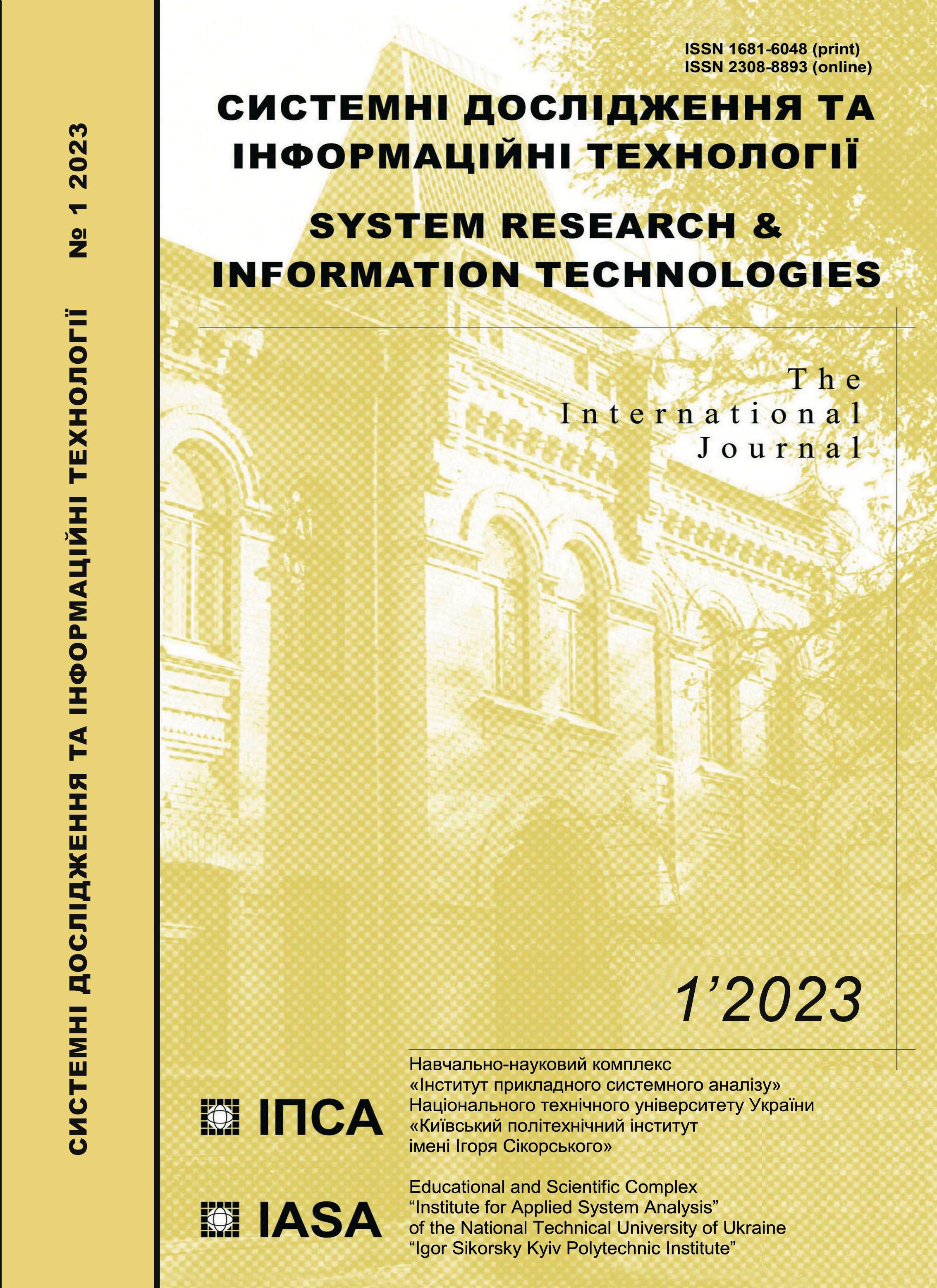Optimization of route distance using k-NN algorithm for on-demand food delivery
DOI:
https://doi.org/10.20535/SRIT.2308-8893.2023.1.07Keywords:
crowd-sourcing, hybrid optimization on-demand food-delivery, k nearest neighbor algorithm (KNN), route optimization, traditional search (ts), urban logisticAbstract
Customers are now more able to purchase goods over the phone or the Internet, and the ability for those purchases to be delivered safely to the customer’s location is proliferating. On-request meal delivery, where customers submit their food orders online, and riders deliver them, is growing in popularity. The cutting-edge urban food application necessitates incredibly efficient and adaptable continuous delivery administrations toward quick delivery with the shortest route. However, signing up enough food parcels and training them to use such food-seeking frameworks is challenging. This article describes a publicly supported web-based food delivery system. IoT (Internet of Things) and 3G, 4G, or 5G developments can attract public riders to act as publicly sponsored riders delivering meals using shared bikes or electric vehicles. The publicly funded riders are gradually distributed among several food suppliers for food delivery. This investigation promotes an online food ordering system and uses K-Nearest Neighbor calculations to address the Traveling Salesman Problem (TSP) in directing progress. The framework also uses the Global Positioning System (GPS) on Android-compatible mobile devices and the TOM-TOM Routing API to obtain coordinates for planning purposes. To evaluate the presentation of the proposed approach, recreated limited scope and certifiable enormous scope on-request food delivery occurrences are used. Compared to the conventional methodology, the proposed strategy reduces the delay time. Each rider will receive the most direct route to the order delivery address. The delivery delay time is reduced by approximately 10–15 minutes for every order. The food supplier can determine whether an item is available to the rider; thus, the food supplier can add an order to the rider having the shortest way.
References
R.D.H. Tobing, “A food ordering system with delivery routing optimization using global positioning system (GPS) technology and google maps,” Internetworking Indonesia Journal, 8(1), pp.17–21, 2016.
O.F. Aydin, I. Gokasar, and O. Kalan, “Matching algorithm for improving ride-sharing by incorporating route splits and social factors,” PloS one, 15(3), p. e0229674, 2020.
D. Chen, Y. Yuan, W. Du, Y. Cheng, and G. Wang, “Online route planning over time-dependent road networks,” in 2021 IEEE 37th International Conference on Data Engineering (ICDE), pp. 325–335.
Y. Liu et al., “FooDNet: Toward an optimized food delivery network based on spatial crowdsourcing,” IEEE Transactions on Mobile Computing, 18(6), pp. 1288–1301, 2018.
W. Tu, T. Zhao, B. Zhou, J. Jiang, J. Xia and Q. Li, “OCD: Online crowdsourced delivery for on-demand food,” IEEE Internet of Things Journal, 7(8), pp. 6842–6854, 2019.
Pradip M. Paithane, S.N. Kakarwal, and D.V. Kurmude, “Top-down method used for pancreas segmentation,” Int. J. Innov. Exploring Eng.(IJITEE), vol. 9, iss. 3, pp. 1790–1793, 2020.
J. Wang et al., “Multi-task allocation in mobile crowd sensing with individual task quality assurance,” IEEE Transactions on Mobile Computing, 17(9), pp. 2101–2113, 2018.
P. Li, J. Lai, and Y. Wu, “Accountable attribute-based authentication with fine-grained access control and its application to crowdsourcing,” Front. Comput. Sci., 17, 171802, 2023. Available: https://doi.org/10.1007/s11704-021-0593-4
C. Chen et al., “Crowddeliver: Planning city-wide package delivery paths leveraging the crowd of taxis,” IEEE Transactions on Intelligent Transportation Systems, 18(6), pp. 1478–1496, 2016.
A.M. Arslan, N. Agatz, L. Kroon, and R. Zuidwijk, “Crowdsourced delivery—a dynamic pickup and delivery problem with ad hoc drivers,” Transportation Science, 53(1), pp. 222–235, 2019.
Y. Ding et al., “A City-Wide Crowdsourcing Delivery System with Reinforcement Learning,” Proceedings of the ACM on Interactive, Mobile, Wearable and Ubiquitous Technologies, 5(3), pp. 1–22, 2021.
P.M. Paithane and S.N. Kakarwal, “Automatic determination number of cluster for multi kernel NMKFCM algorithm on image segmentation,” in International Conference on Intelligent Systems Design and Applications. Springer, Cham, 2018, pp. 870–879.
P.M. Paithane, S.N. Kakarwal, and D.V. Kurmude, “Automatic Seeded Region Growing with Level Set Technique Used for Segmentation of Pancreas,” in International Conference on Soft Computing and Pattern Recognition. Springer, Cham, 2020, pp. 374–382.
P.M. Paithane and S.N. Kakarwal, “Automatic Pancreas Segmentation using A Novel Modified Semantic Deep Learning Bottom-Up Approach,” International Journal of Intelligent Systems and Applications in Engineering, 10(1), pp. 98–104, 2022.
Pradip Mukundrao Paithane, “Yoga Posture Detection Using Machine Learning,” Artificial Intelligence in Information and Communication Technologies, Healthcare and Education: A Roadmap Ahead, 2022: 27.
S.N. Kakarwal and P.M. Paithane, “Automatic pancreas segmentation using ResNet-18 deep learning approach,” System Research and Information Technologies, no. 2, pp.104–116, 2022.
N. Wang et al., “Collecting and analyzing key-value data under shuffled differential privacy,” Front. Comput. Sci., 17, 172606, 2023. Available: https://doi.org/10.1007/s11704-022-1572-0
A. Maatoug, G. Belalem, and S. Mahmoudi, “A location-based fog computing optimization of energy management in smart buildings: DEVS modeling and design of connected objects,” Front. Comput. Sci., 17, 172501, 2023. Available: https://doi.org/10.1007/s11704-021-0375-z
A. Biswas et al., “OCSO-CA: opposition based competitive swarm optimizer in energy efficient IoT clustering,” Front. Comput. Sci., 16, 161501, 2022. Available: https://doi.org/10.1007/s11704-021-0163-9
C. Zhu, B. Han, and Y. Zhao, “A bi-metric autoscaling approach for n-tier web applications on kubernetes,” Front. Comput. Sci., 16, 163101, 2022. Available: https://doi.org/10.1007/s11704-021-0118-1

